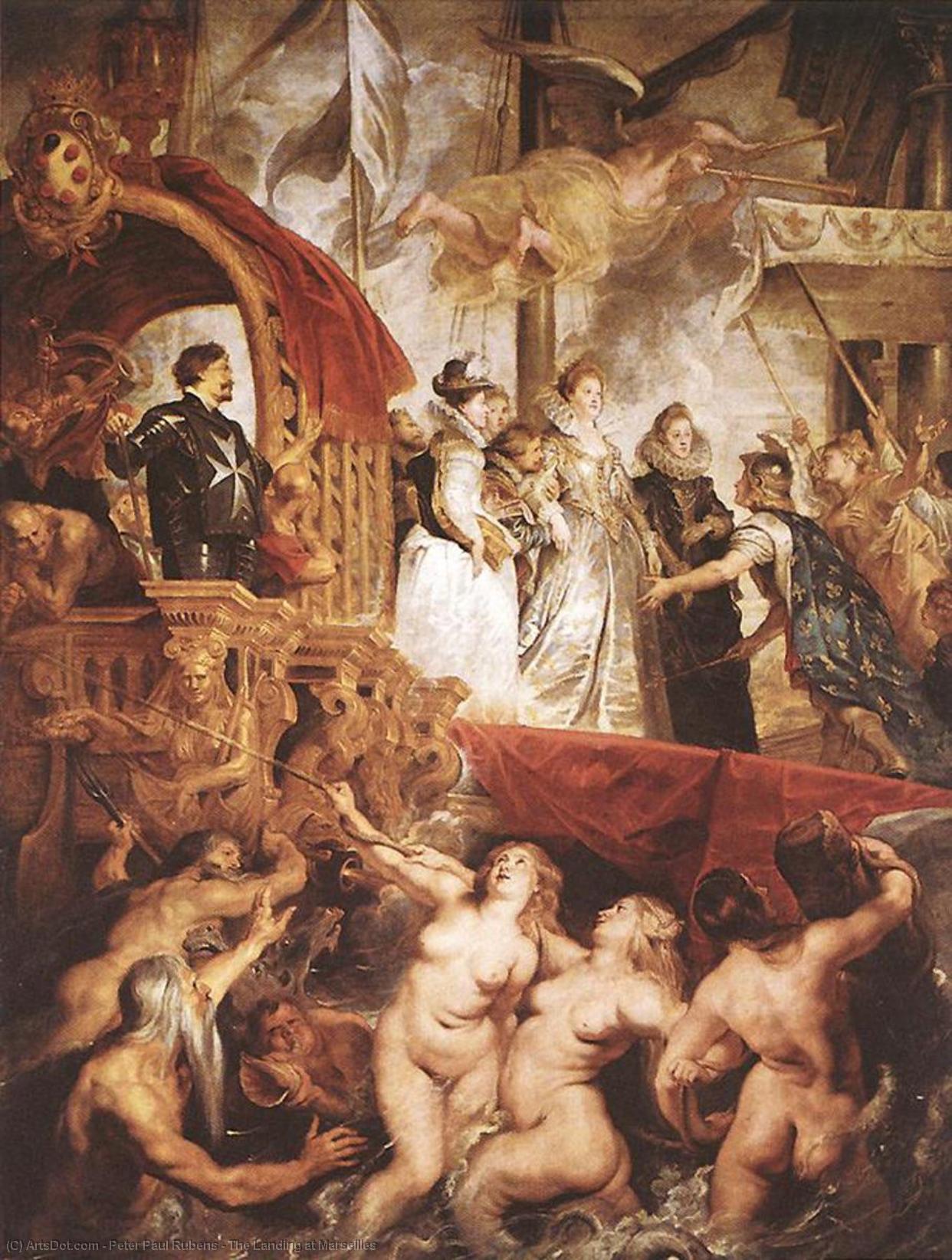kunstner: Peter Paul Rubens
Stil: Baroque
emner: Characters France
Teknik: Oil
One of the Marie de' Medici cycle's painting; Having never been a particularly graceful event for anyone, disembarking a ship does not pose a problem for Rubens in his depiction of Marie de' Medici arriving in Marseilles after having been married to Henry IV by proxy in Florence. Rubens has again, turned something ordinary into something of unprecedented magnificence. He depicts her leaving the ship down a gangplank (she actually walked up, not down, but was illustrated this way by Rubens to create a diagonal element). She was accompanied by the Grand Duchess of Tuscany and her sister, the Duchess of Mantua, into the welcoming, allegorical open arms of France, evidenced by the golden fleur-de-lis on his cape of royal blue. Her sister and aunt flank Marie while two trumpets are blown simultaneously by an ethereal Fame. All this occurs while Neptune and his corps of Nereids rise from the sea, after having accompanied her on the long voyage to procure her safe arrival in Marseilles. It is melody and song as Rubens combines heaven and Earth, history and allegory into a symphony for the eyes of the viewer. Moreover, in The Debarkation at Marseilles, Marie is welcomed to her new home by a personified France, wearing a helmet and a blue mantle with golden fleur-de-lis in the painting. Above, Fame blows two horns to announce her arrival to the people of France with her future husband. Below, Neptune, three sirens, a sea-god, and a triton help escort the future Queen to her new home. To the left, the arms of the Medici can be seen above an arched structure, where a Knight of Malta stands in all of his regalia. On a side note, Avermaete discusses an interesting idea that is particularly present in this canvas.
kunstner |
|
|---|---|
Hent |
|
|
Tilladelser |
Peter Paul Rubens – Mest viste kunstværker
|
This image (or other media file) is in the public domain because its copyright has expired. However - you may not use this image for commercial purposes and you may not alter the image or remove the watermark. This applies to the United States, Canada, the European Union and those countries with a copyright term of life of the author plus 70 years.
|















 Note that a few countries have copyright terms longer than 70 years: Mexico has 100 years, Colombia has 80 years, and Guatemala and Samoa have 75 years. This image may
not be in the public domain in these countries, which moreover do not implement the
Note that a few countries have copyright terms longer than 70 years: Mexico has 100 years, Colombia has 80 years, and Guatemala and Samoa have 75 years. This image may
not be in the public domain in these countries, which moreover do not implement the